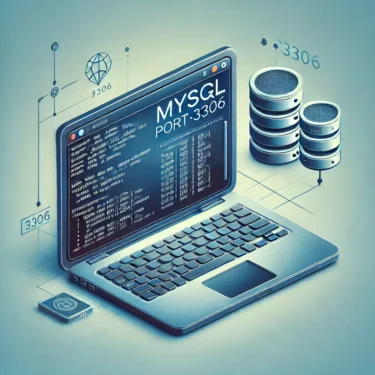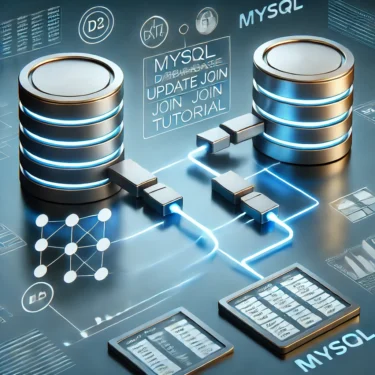目次
1. About MySQL’s Default Port Number
MySQL is one of the relational database management systems (RDBMS) and plays a crucial role in supporting communication between web applications and database servers. The foundation of this communication is the “port number,” and MySQL uses port 3306 by default. A port number specifies the destination that a client connects to when accessing a database server and serves as an identifier to distinguish the communication path from other applications and services.Why MySQL Uses Port 3306
Port 3306 is the number set as the default when a MySQL server is installed, and it is generally left unchanged unless there is a specific reason. Through this port, the client and MySQL server exchange data. Because MySQL operates over the TCP (Transmission Control Protocol), explicitly setting the port number is recommended for security reasons.2. How to Check the Port Number
If the MySQL port number has been changed from the default 3306 or you want to verify the default settings, you can easily check it using the commands below.Checking with the SHOW VARIABLES command
After logging into MySQL, you can verify the currently used port number by running the following command.SHOW VARIABLES LIKE 'port';Checking with the status command
Another method is to use MySQL’sstatus command to display the current configuration. This command shows basic database information along with the port number, making it a convenient way to verify settings. The steps are: first log into MySQL and then enter the following command.status;3. How to Change the Port Number
To change MySQL’s default port number, edit the MySQL configuration file “my.cnf” or “my.ini”. This configuration file is typically located in the directory where MySQL is installed.How to Edit the Configuration File
- Open
my.cnformy.iniin a text editor. - Find the
[mysqld]section and specify the port number as shown below.
[mysqld]
port = 3310- After changing the settings, restart the MySQL server.
Specifying the Port on the Command Line
When connecting from a client and you need to specify a particular port, use the port number as shown below.mysql -h localhost -P 3310 -u root -p4. Points to Note When Changing Ports
When changing MySQL’s port number, it is important to pay attention to the following points.Check for Conflicting Ports
When changing the port number, you need to ensure it does not conflict with other applications or services. For example, on Linux systems, you can use commands such asnetstat or lsof to check which ports are currently in use.Consider Security Measures
Changing the default port number can help reduce the risk of attacks from outside. Attackers typically target default ports, so changing the port can serve as a security measure. However, changing the port alone does not provide complete security, so it is advisable to also consider additional measures such as firewall configuration and IP address restrictions.5. Port Changes and Security Measures
Changing MySQL’s port number from the default 3306 can improve security in some cases. However, it is advisable to adopt stronger protection measures rather than relying solely on changing the port number as a security measure.Remote Connections Using an SSH Tunnel
When connecting to a MySQL server remotely and securely, using an SSH tunnel is recommended. An SSH tunnel allows you to route traffic through an encrypted channel, preventing eavesdropping and tampering with the data. For example, you can set up an SSH tunnel with steps like the following.- Use an SSH client to connect to the server and configure the tunnel.
- Specify MySQL’s port number as the destination port, establishing encrypted communication between the local and remote sides.



